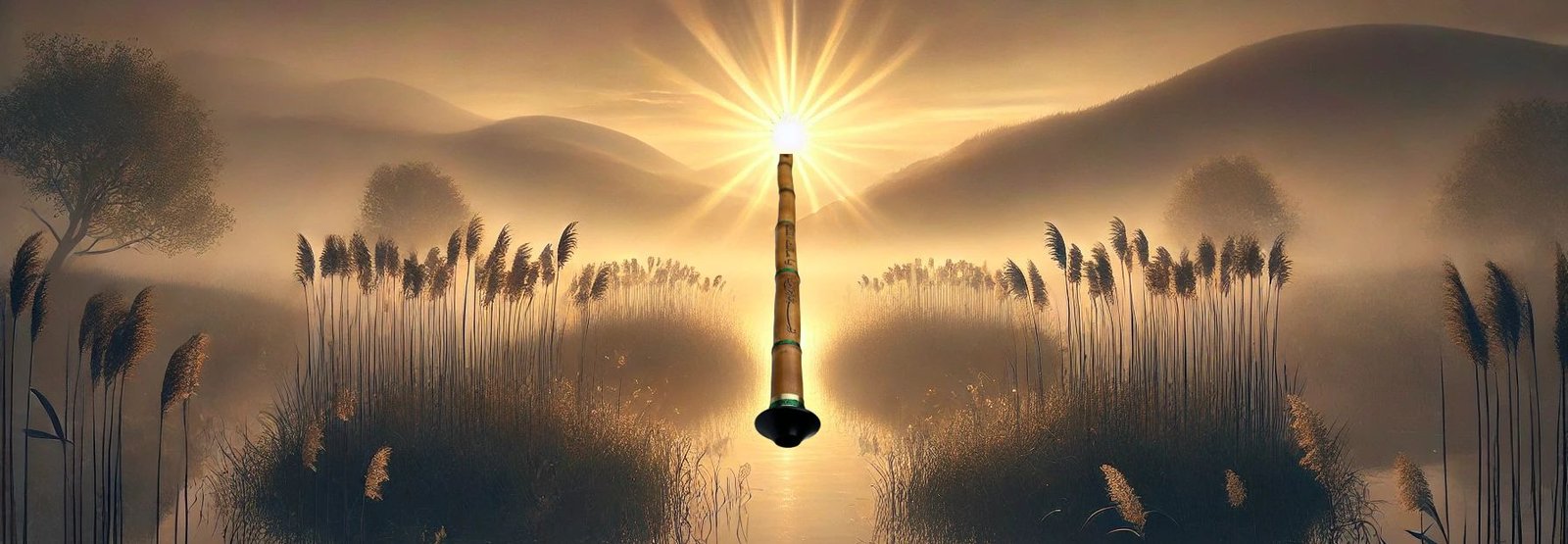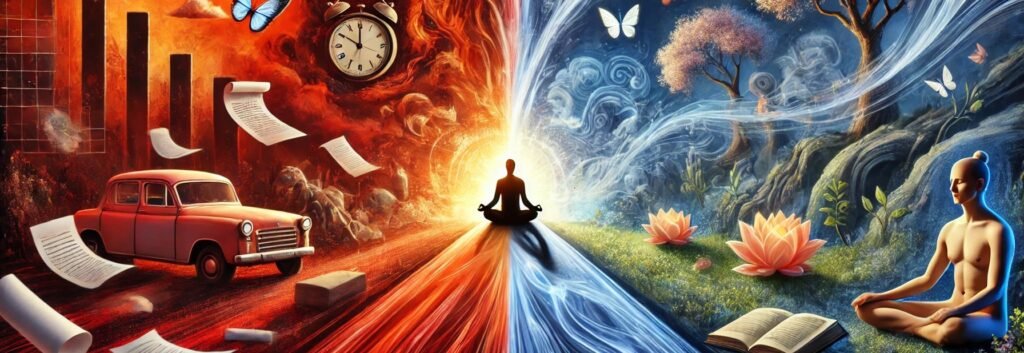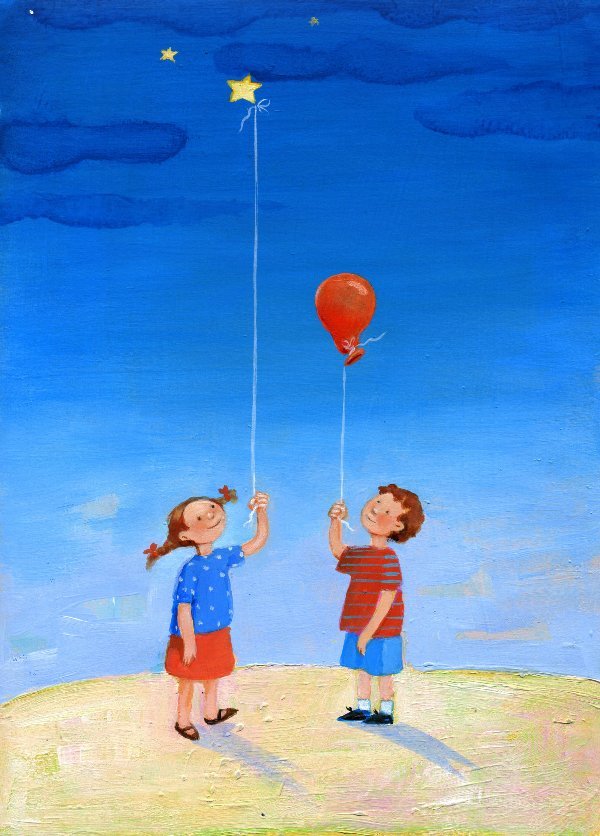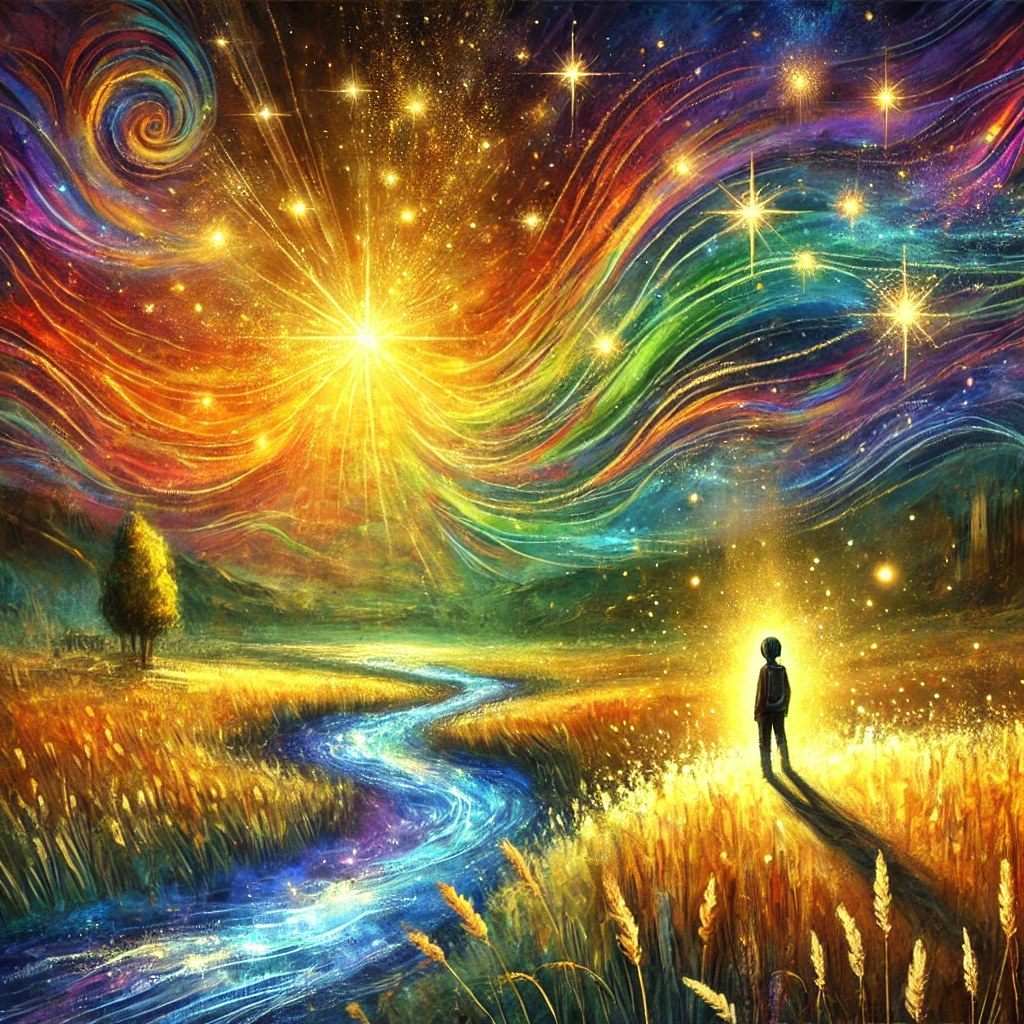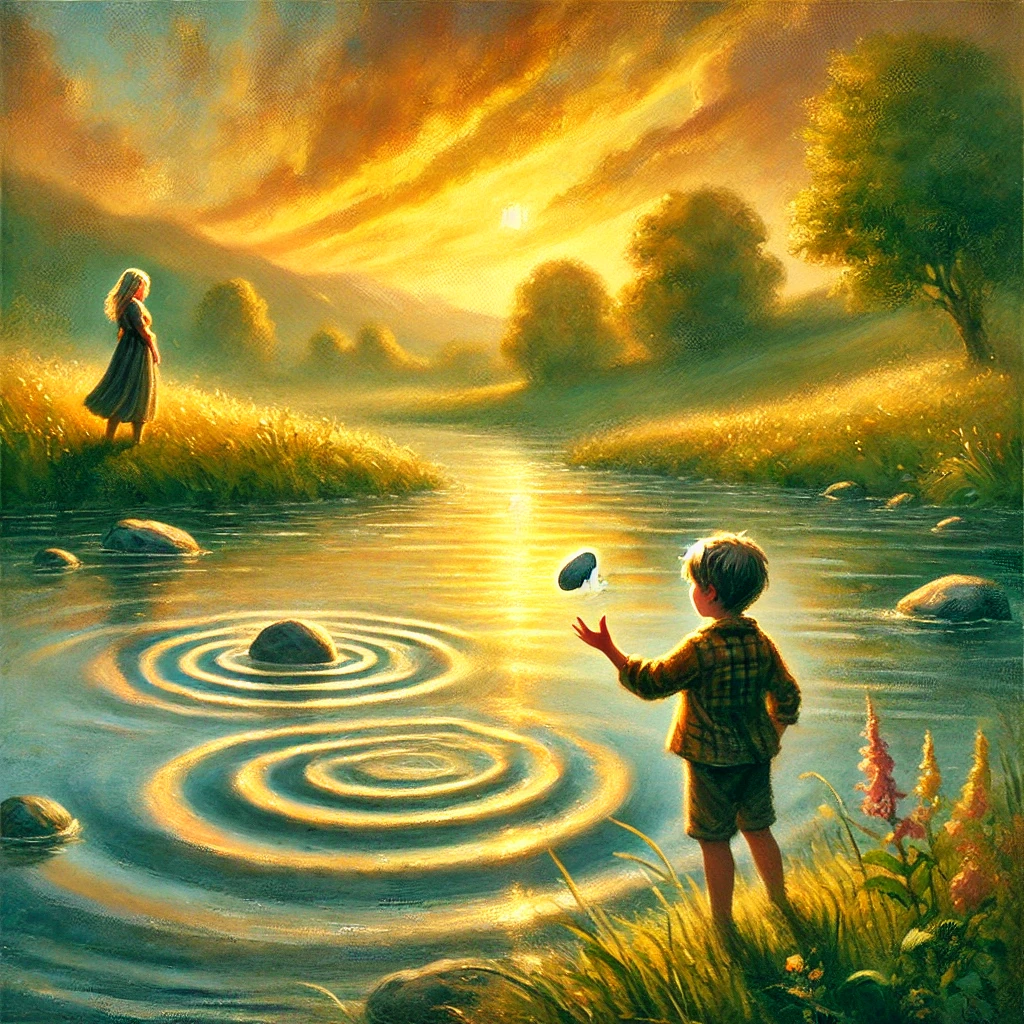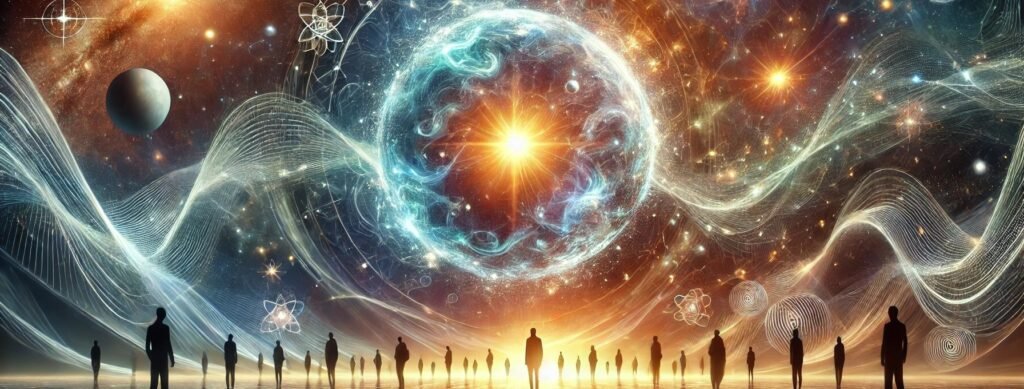Ecstatic Lament
The soliloquy of the soul and the aria of the heart can be described as an ecstatic lament—a paradoxical union of joy and sorrow, yearning and fulfillment. This phrase captures the dual nature of these expressions: the deep ache of separation from something eternal and the ecstatic beauty of being alive to experience that longing.
A Quiet Ecstasy of Longing
The soul’s soliloquy is introspective, a whispered prayer to the infinite. It mourns the distance from the source of all being while celebrating the sacred connection that makes the longing possible. Its ecstasy lies in recognizing that even the pain of separation is evidence of the soul’s eternal bond to the divine.
The tone is still and contemplative, an inner voice that echoes truths beyond words.
A Rapturous Cry
The heart’s aria transforms the soul’s quiet yearning into a bold, passionate expression. It is an emotional outpouring, the vibrancy of life’s raw beauty, even in pain. The heart laments with open arms, reaching outward in its longing.
The ecstasy of the heart’s aria lies in its willingness to risk everything—vulnerability, rejection, even heartbreak—for the sake of connection. It is the fire that Rumi describes as divine inspiration, burning with the ache of love and the joy of its expression.
Ecstatic Lament
The soliloquy and the aria form an ecstatic lament—a harmony of opposites. The soul’s quiet reflection anchors the heart’s bold cry, while the heart’s passionate expression gives voice to the soul’s depth.
This ecstatic lament mirrors the human experience: the tension of longing for wholeness while celebrating the beauty of life’s imperfections. It is the reed’s hollowed interior, which both mourns its cutting and sings because of it. Joy and grief are braided together, creating a melody that transcends both.
This phrase, ecstatic lament, encapsulates the paradoxical truth: to be human is to hold both sorrow and joy, solitude and connection, in a sacred dance that shapes the music of our lives.
The human experience is a harmony of two essential voices: the soul’s contemplative soliloquy and the heart’s impassioned aria. These voices, though distinct, are inseparable, weaving together the quiet yearning for unity and the bold expression of life’s passions. To explore this dance, we turn to poetry—a medium that captures the ineffable. Rumi’s Song of the Reed is our guide, complemented by other poetic voices that echo the soul’s solitude and the heart’s song.

The Soliloquy of the Soul
Rumi’s Song of the Reed begins with a lament:
“Hearken to this reed forlorn,
Breathing ever since was torn
From its rushy bed, a strain
Of impassioned love and pain.”
The reed’s music is born of separation, a longing for its source. In this metaphor, the reed represents the soul, hollowed by its detachment from the divine. Its voice is not loud; it does not demand—it simply is. The reed’s hollow lament is a song that only arises because of the emptiness carved by love’s absence.
The soul’s soliloquy whispers, calling us inward to remember our forgotten unity. (Bold stanzas from Song of the Reed)
Hafiz captures a similar sentiment of the soul’s yearning for its essence:
“I wish I could show you when you are lonely or in darkness
The astonishing light of your own being.”
The soul’s voice is not a shout but a gentle reminder of what lies beneath the surface. It does not seek to fix or change but to remind us that the infinite light is always present, even when obscured.
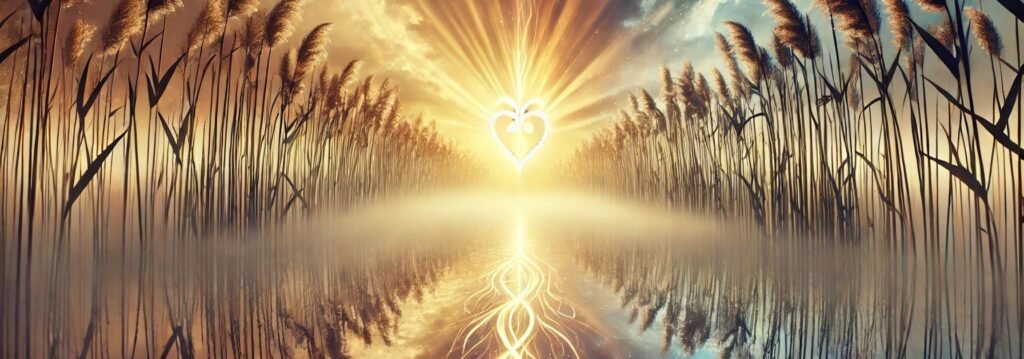
The Aria of the Heart
While the soul yearns quietly, the heart cannot remain silent. The heart sings, proclaims, and dares to reach outward. It transforms the soul’s longing into bold expression as Rumi continues:
“’Twas the wine of God inspired me,
’Twas the flame of God that fired me.
If thou wouldst know how lovers bleed,
Hearken, hearken to the reed.”
The heart’s aria is impassioned, fueled by divine inspiration. It carries the ache of the soul’s solitude into the world, creating connection through its vulnerability. Pablo Neruda expresses this beautifully:
“I love you as certain dark things are to be loved,
In secret, between the shadow and the soul.”
Here, the heart’s song emerges not in perfection but in raw, imperfect beauty. It is the voice of love, longing, and courage—a melody that dares to be heard, even when it trembles.
Harmony in Contrast
The reed’s song, like the interplay of soul and heart, exists because of tension:
“The secret of my song, though near,
None can see and none can hear.
Oh for a friend to know the sign
And mingle all their soul with mine!”
The soliloquy of the soul deepens the aria of the heart, anchoring it in timeless truth. The heart’s bold expression gives voice to the soul’s silent wisdom. Together, they create a harmony that transcends the limits of either separately.
Mary Oliver reflects this union in her poem Wild Geese:
“You do not have to be good.
You do not have to walk on your knees
For a hundred miles through the desert, repenting.
You only have to let the soft animal of your body
Love what it loves.”
This is the heart and soul in concert: the permission to be fully human, to hold both longing and love, solitude and connection. The reed’s lament becomes a song of becoming—a melody that allows us to embrace the fullness of our being.

A Call to Listen
The soul and heart invite us to listen to the world around us and the music within. Kahlil Gibran captures this invitation:
“For even as love crowns you so shall it crucify you.
Even as it is for your growth so is it for your pruning.”
The reed’s hollow is both its wound and its gift. Its separation allows it to sing, just as our longing gives rise to connection. When we listen deeply, we hear the soliloquy of the soul and the aria of the heart, each voice enhancing the other.
A Sacred Duet
Rumi’s reed reminds us that the ache of longing and the passion of expression are not opposites but partners. Together, they create the sacred music of existence:
“Let its voice but reach thine ear,
And through the veil of words appear
What it says and what it knows,
Of the pangs that heal, the thorn, the rose.”
The soliloquy of the soul holds the depth of stillness; the aria of the heart carries that depth into the light of relationship. As we honor both voices, we discover the harmony of our being—a melody that is uniquely ours yet resonates with the universal. Let us hearken to the reed within and allow its song to transform us.
